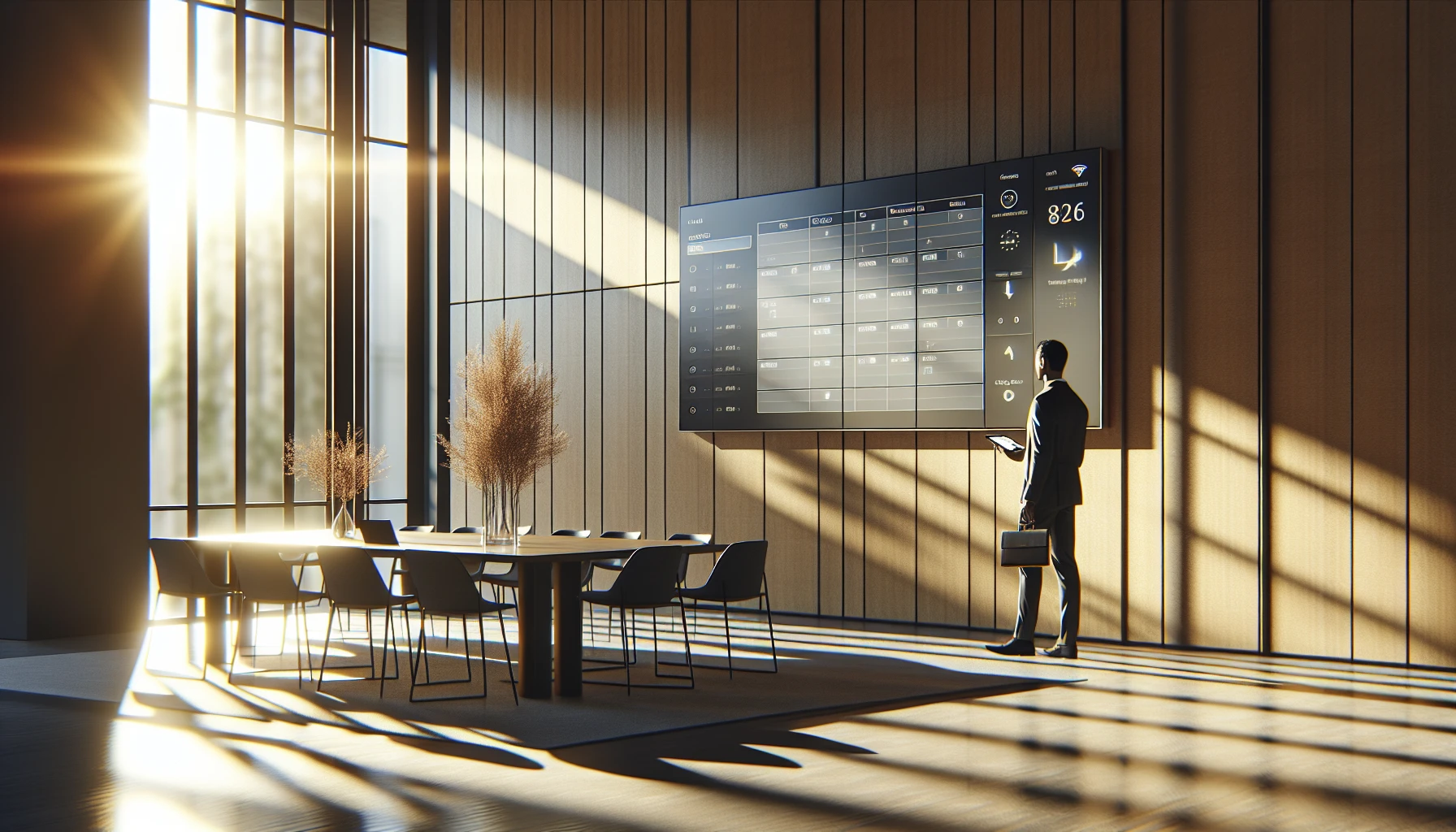· Ricardo Batista · 12 min read
Meeting Scheduler Time Zones - 6 ways to plan global meets
Setting up global meetings is not always easy; Outlook polls, World Time Buddy and Slack integrations help handle mixed time zones.

Scheduling meetings across different time zones can sometimes feel messy and confusing. Coordinating plans using tools like Outlook, World Time Buddy and Slack Build help you handle all those time differences. It might seem a bit chaotic sometimes but with the right method, you can make meeting planning smoother and ensure everyone’s on the same page.
Key Takeaways
- Scheduling meetings across different time zones is easier when you use built-in features like time zone selectors and automated polls
- Tools like Microsoft Outlook help simplify the process by handling time conversions and scheduling polls, making it less confusing
- Using solutions like World Time Buddy brings together world clocks, meeting planners and time converters all in one
- Slack integrations and custom workflows can smooth out communication but might feel a bit messy at first
- We show our expertise in automatically pinging attendees who arrive late to meetings, ensuring things stay on track even when schedules get off-key
Meeting Scheduler Time Zones Fundamentals
When scheduling meetings across different time zones, there is a lot more to consider than just picking a time. Coordinating across various geographical areas means ensuring that every participant gets a timely reminder – especially when someone arrives late. This can be handled with automated ping reminders that alert those who join the meeting after it has begun. In practice, a well-set-up meeting scheduler effortlessly integrates time zone conversion and meeting reminder tools to avoid miscommunication and wasted time.
Integrating meeting reminders with time zone adjustments can save you from the hassle of manually converting times and chasing down latecomers. By automating these tasks, you make sure that even if someone is running behind, they get the appropriate nudge to join promptly, reducing disruptions and keeping everyone on track.
Microsoft Outlook Scheduling and Built-in Tools
Microsoft Outlook comes equipped with several features that address the challenges of global scheduling. Its integration of scheduling polls and time zone management allows you to use built-in components like the Date Picker, Time Zone selector, and duration controls. These elements work together to help you set meetings that are clear and timely for all participants.
Scheduling Polls and the Date Picker
The Date Picker function in Microsoft Outlook makes it simple to select dates. When setting a meeting, you can add multiple poll suggestions and let attendees vote for a suitable time. This method ensures that participants across different zones can find a mutually convenient time without constant back-and-forth.
- Step-by-step for Scheduling Polls:
- Open your Outlook calendar and create a new event.
- In the event window, select the scheduling poll option.
- Choose potential dates utilizing the Date Picker.
- Send the poll to all attendees and wait for their input.
- Finalize the meeting time based on the poll results.
This method not only improves efficiency but also ties in seamlessly with automatic meeting reminders so that if someone pings in late, a friendly reminder gets sent automatically.
Time Zone Selector and Duration Controls
Outlook’s Time Zone selector is another powerful tool. It allows you to set the meeting time in the host’s time zone while automatically displaying the corresponding times for each participant’s zone. This makes it easier to schedule a meeting that suits everyone’s schedule.
- Implementing the Time Zone Selector:
- When creating a meeting in Outlook, locate the time zone option near the start and end times.
- Choose the appropriate time zone for your meeting.
- Outlook will adjust the start and end times for participants based on their configured time zones.
- Use duration controls to set the meeting length, ensuring a fixed time for automatic reminder setups.
For more details on Outlook’s scheduling functionalities, visit Microsoft 365.
World Time Buddy Tools
One popular solution among young professionals is the use of World Time Buddy for scheduling meetings internationally. This tool is known for its ease of use and clear visual layout, which makes it easy to compare time zones side-by-side. This feature is particularly handy when combined with automated meeting reminders that prompt late attendees with just enough time to catch up.
Time Zone Converter and World Clock Meeting Planner
The World Time Buddy platform provides a Time Zone Converter and a World Clock Meeting Planner that work hand-in-hand. They allow you to quickly see the current times in cities around the world and plan meetings accordingly.
Using the Time Zone Converter:
- Enter the cities or time zones you need to compare.
- The tool displays the current time for each zone in a simple side-by-side layout.
- Use this information to choose a meeting time that is least inconvenient across the board.
Setting up a World Clock Meeting Planner:
- Open the World Clock Meeting Planner on the World Time Buddy website.
- Input all necessary locations.
- Choose a potential meeting time and see how it aligns across different time zones.
- Adjust your meeting invitation if needed to ensure it falls within a reasonable hour for each participant.
When paired with automated meeting reminders, you can ensure that even time zone differences do not hinder punctual meeting starts. For more examples and details on real-life applications, check out World Time Buddy.
Customizing Workflows on Slack
Slack’s Build platform allows teams to create customized workflows that integrate with various calendar and meeting reminder tools. Particularly useful is its integration with the Google Calendar connector, which automatically syncs scheduled events with Slack channels. This setup not only pushes meeting reminders to team members but also pings anyone who joins late, ensuring they’re updated instantly.
Integrating Google Calendar with Slack
Using Slack’s Build platform to connect with Google Calendar is a straightforward process that can significantly smooth out scheduling challenges across time zones. Here’s how to set it up:
- Step-by-step Integration:
- Log in to your Slack workspace and navigate to the Build section.
- Browse through the available integrations and select the Google Calendar connector.
- Follow the guided steps to connect your calendar with Slack.
- Once connected, create customized workflows that send automatic pings to attendees when a meeting is about to start or when someone is late.
- Tailor the workflow settings to match your team’s communication style and schedule needs.
This integration means that all the users get notifications adapted to their local time zones. If someone is late, the built-in reminder feature pings them, so they can quickly join the discussion without causing further delays. More details are available at Slack.
Benefits of Custom Workflows and Meeting Reminders
Custom workflows in Slack reduce manual notification overhead and streamline communication. The ability to automatically ping attendees serves as a reliable fail-safe for managing meetings across diverse time zones.
- Key Benefits:
- Eliminates the need for manual follow-ups.
- Ensures a real-time update in team channels when participants join late.
- Offers customization that can fit any team’s needs or style.
- Provides a unified platform where meeting scheduling and reminders work seamlessly together.
By setting up these automated pings, teams reduce the chances of missed connections and ensure everyone is accountable for joining meetings on time.
Additional Resources and Tools
Beyond the primary platforms, several other resources and templates can optimize your scheduling process and boost meeting productivity. These include meeting templates, CRM tools, and even design solutions that align with your team’s branding.
Meeting Templates and CRM Tools
Many professionals rely on customizable meeting templates that are designed to account for multiple time zones. These templates often include fields for the start and end times in local time formats, sections for automated reminders, and even notes for recording meeting outcomes.
- How to Use Meeting Templates:
- Choose a meeting template that supports multi-time zone entries.
- Fill in the meeting details including adjusted times for each participant.
- Incorporate automated meeting reminders that clearly indicate the delay policy so that late joiners get an automated prompt.
- Save and send the template to all meeting participants.
CRM tools that come with integrated scheduling features also allow you to sync your meetings with automatic reminders. This ensures that your entire team, or even client groups, have a consistent reminder system that pings attendees who join later than scheduled.
Community-Driven Platforms and Design Solutions
For further insights, community-driven sites such as HubSpot provide a wealth of resources related to meeting management and automation. Many guides and templates are available that demonstrate real-world scenarios of how scheduling across time zones can be improved with smart tools and built-in reminders.
Design solutions from platforms like Figma also offer customizable UI/UX patterns that can be adopted by developers creating meeting scheduler tools. These design systems often include considerations for time zone displays, notifications for late joiners, and easy-to-read calendar interfaces.
- Steps for Enhancing Your Scheduling Tools:
- Review meeting management templates available on design platforms.
- Note the layout options that provide clear visualization of time zone differences.
- Implement design ideas that help users quickly digest meeting times and reminder pings.
- Test the interface with a small group of users to gather feedback on the reminder functionality.
Useful Templates and Further Integration
Using standardized templates is an excellent way to ensure consistency in meeting scheduling. Many platforms provide downloadable or shareable templates that can be easily modified. These templates often include integrated sections for methodical reminders, ensuring that if a participant is late, the system pings them without manual intervention.
- Benefits of Using Templates:
- Standardizes meeting setups across departments.
- Reduces the learning curve for new team members.
- Ensures that time zone differences are clearly documented.
- Automatically integrates with reminder systems for late arrivals.
For those looking to explore even more advanced scheduling features, consider checking out our internal guides on meeting scheduling. You might find additional insights on related topics like Meeting Reminder Email or even tools that help you manage complex meeting arrangements through a dedicated Meeting Reminder App. You can also check out our docs for more information.
Using these resources and the step-by-step instructions provided can dramatically simplify the process of scheduling across time zones. Automated meeting reminders ensure that every team member is nudged to join at the right moment, thereby reducing delays and miscommunications. With a combination of scheduling polls from Microsoft Outlook, robust time zone comparison tools from World Time Buddy, and custom workflows on Slack, you create an environment of punctuality even when geographical differences come into play.
When planning meetings, a clear strategy incorporating proper scheduling tools and automated reminders is essential. By leveraging reliable external resources and practical templates, even busy teams can manage meetings across time zones smoothly. This not only helps in minimizing late arrivals but also fosters a culture of responsibility and prompt communication—a vital component in any efficient work environment. You can also use a Schedule Reminder Tool to help.
Conclusion
Looking back, we covered how to schedule meetings when time zones and confusing digital calendars seem to pile up. The central idea was to ease global meets using smart tools like Outlook, World Time Buddy and Slack; each tool brings its own benefit in keeping everyone on the same page. One key takeaway is that you can simplify your planning process by using built-in features like time zone selectors and automated reminders; another is that relying on custom workflows can clear up lots of scheduling issues even in hectic environments. It may seem a bit scattered at first, but once you put these methods to work, you’ll see fewer headaches and more productive meetings. If you want to take it a step further, remember that Meeting Reminders’s expertise in Automatically ping the attendees that arrive late to your meetings is a solid choice to keep things running smoothly. So, try these steps, experiment with the systems that fit you best, and see how your meeting coordination improves over time. Meeting Reminders can really help streamline your scheduling efforts.
Related Posts
Frequently Asked Questions (FAQs)
How do meeting scheduler time zones work?
Meeting scheduler time zones help you plan meetings even if participants are spread across different parts of the world. They work by automatically adjusting the meeting times to fit each person’s local time zone so everyone gets it right. It’s a handy tool especially when planning with teams in multiple regions.
Can I use meeting scheduler time zones with tools like Microsoft Outlook?
Yes you can. Microsoft Outlook has built-in features that work hand in hand with meeting scheduler time zones. You can create scheduling polls and set up time zone options so that everyone sees the meeting times in their local time. This makes planning group meetings less of a headache.
What happens if someone joins the meeting late?
Our expertise in Automatically ping the attendees that arrive late to your meetings really stands out here. With advanced meeting scheduler time zones integrated into smart reminders, late attendees get a quick ping letting them know they’re joining after the planned start. This helps in keeping everyone on track without wasting time.
Are there third-party tools for managing meeting scheduler time zones?
Absolutely, there are several third-party tools available. For example, World Time Buddy offers a simple interface to compare different time zones and plan the best meeting time for everyone. These tools often combine world clocks, time converters and meeting planners all in one.
Is it easy to set up meeting scheduler time zones for global teams?
Yes, it is designed to be user-friendly. Most systems let you choose your time zone settings easily, and with a few clicks you can send out invitations that automatically adjust for attendees across different regions. It may seem a bit confusing at first, but once you try it, scheduling global meetings becomes a lot more intuitive.
Sources
- Create a Scheduling Poll in Outlook for Windows - Microsoft Support
- Time Converter and World Clock - Conversion at a Glance - Pick best time to schedule conference calls, webinars, online meetings and phone calls.
- Meeting Planner – Find best time across Time Zones
- Timezone Converter, Meeting Planner - TimezoneWizard



